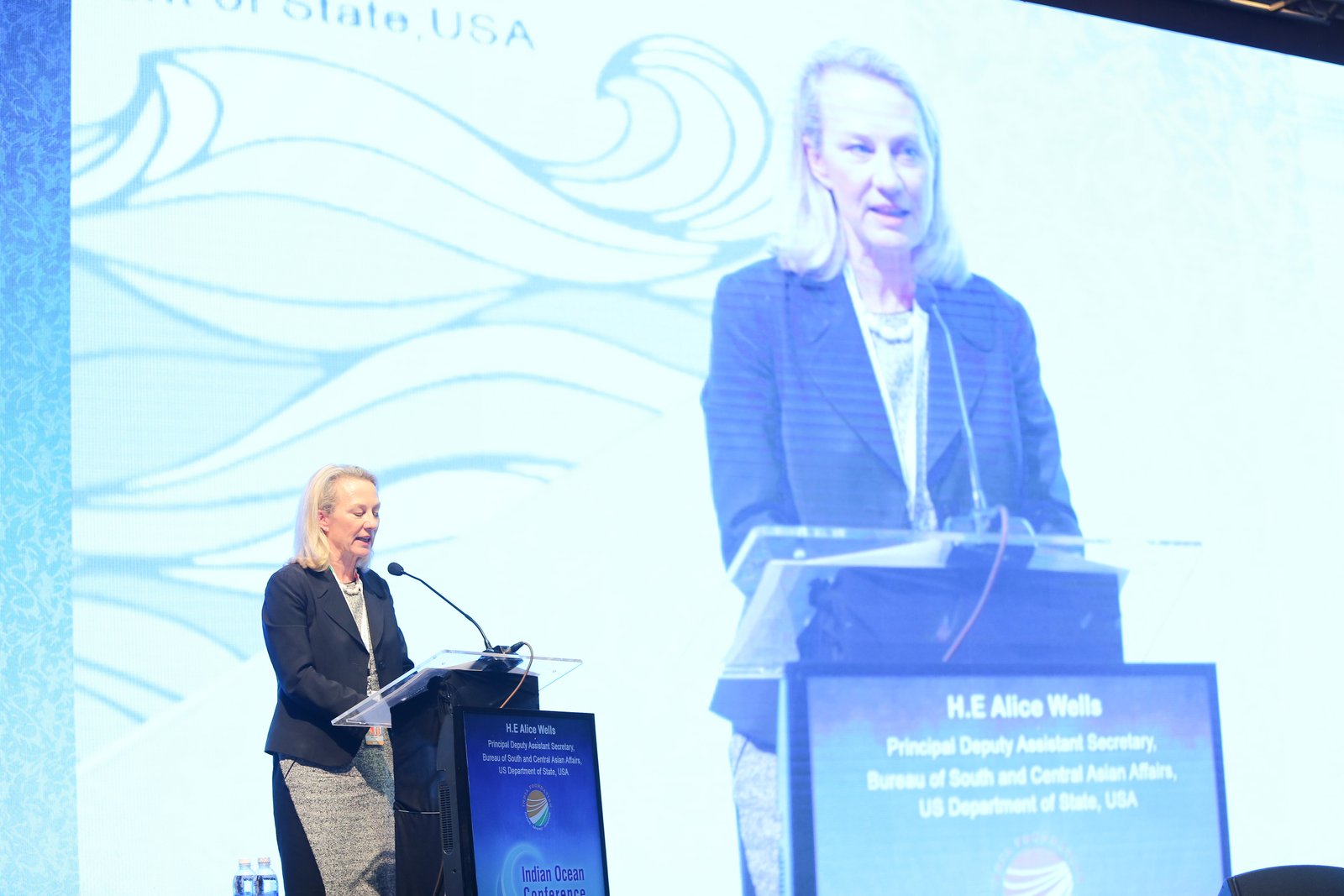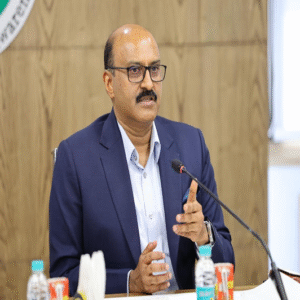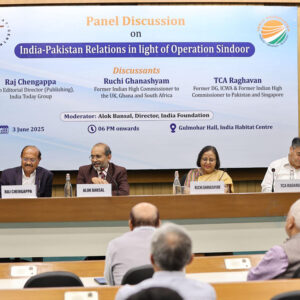In 2017, the Indian Ocean Conference’s theme was “Peace, Progress, and Prosperity.” In 2018, it is “Building Regional Architectures.” This change in themes mirrors the need of the hour – we must transition from identifying the future we want, to actively building that future, together.
In July 2018, Secretary Pompeo, in his address at the Indo-Pacific Business Forum, made clear that the United States is committed to supporting its words with actions and with resources. Some have accused US of talking about a free and open Indo-Pacific as it is withdrawing from Asia. Secretary Pompeo was clear. US is not withdrawing from Asia. US has never contemplated withdrawing from Asia. America’s own security and prosperity is intricately tied to this region. The Secretary outlined the U.S. commitment to ensuring a free and open Indo-Pacific that must, and will, include a thriving Indian Ocean region of economic growth, with a strong commitment to collective security and global norms that allow for an equal and equitable playing field and encourage prosperity for all.
The United States’ vision for the Indian Ocean region, and US roadmap for how it, together with its partners, can achieve that vision may be summarised in three broad points. First, US will expand economic engagement, with particular attention to addressing the region’s infrastructure needs and encouraging regional interconnectivity. Second, US will continue to broaden and deepen its security cooperation to address the geopolitical, transnational, and environmental threats that could derail progress in the Indian Ocean region. Third, US reaffirms its commitment to free and open air and sea-lanes, a rules-based global order, and a region where a level playing field gives every nation and every citizen the opportunity to prosper.
Economic Engagement
The Indian Ocean region is one of the most dynamic in the world. Nearly half the world’s 90,000 commercial vessels and two-thirds of the global oil shipments travel through its sea lanes, and protecting open and unhindered commerce is vital not only for the United States, but for each and every country in this region. The Indo-Pacific boasts some of the fastest growing economies on earth and is home to half of the globe’s population. The United States government and private sector have all along played critical roles in supporting this remarkable growth story. And US will continue to do so.
The United States is committed to the economic well-being of the region, which for us means focusing on private sector-led investments in sectors essential to the economic future of the Indo-Pacific. As Secretary Pompeo made clear, government spending alone can never address the Indo-Pacific’s needs, and is not the path forward for the Indian Ocean region. Only the private sector can provide the estimated $26 trillion needed by 2030 for infrastructure investment in Asia. We are proud of the important contributions of the U.S. private sector to growth and prosperity in the region. Annually, the United States conducts $1.4 trillion in two-way trade with the Indo-Pacific region, and over the past decade, Indo-Pacific foreign direct investment by American companies has doubled to about $940 billion last year from $444 billion in 2007.
Today, U.S. companies rank as the largest source of foreign investment in Bangladesh, with more than $3.3 billion invested to date. Chevron Bangladesh is the country’s largest producer of natural gas (over 55 percent) and GE, with 30 gas turbines and 1,500 gas engines installed, is helping generate a third of Bangladesh’s power capacity. SpaceX, one of the United States’ most innovative firms, recently helped launch Bangladesh’s first indigenous communications satellite. In India, GE is proceeding with its $2.5 billion investment in a factory that will produce 960 diesel-electric engines to help modernise the country’s rail system.
Yet, as we look to continue to unleash the potential of our private sectors to contribute to growth and development, the United States government is itself also committed to investing in the region through transparent and sustainable initiatives. Examples of these investments range from the $18 million in current loan support for micro, small, and medium-sized enterprises in Sri Lanka provided by the U.S. Overseas Private Investment Corporation; to training in innovative best practices provided to representatives from South Asia’s major ports including Colombo, Chittagong, Mumbai, and Pondicherry. It also includes the largest single grant to Nepal – a $500 million Compact from the Millennium Challenge Corporation signed in September 2017. This Compact, which will help to expand Nepal’s road network and electricity transmission infr-astructure, includes a $130 million of investment from the government of Nepal, bringing the total value of the investment to $630 million. In India, the U.S. Trade and Development Agency has supported the phenomenal growth of the civil aviation sector through a public-private partnership among U.S. and Indian civil aviation agencies and over 30 aviation companies, to promote aviation safety, security, standards harmonisation, and airspace liberalisation.
Yet, too many companies remain wary of investing in this dynamic region. An essential part of Indo-Pacific diplomacy of US will involve working with its partners in the region to prioritise transparency, accountability, and responsible financing that will unlock trillions in private capital into their economies, and into productive enterprises that bring jobs and prosperity to their peoples.
Security
As we pursue our economic growth goals, we cannot take our eyes off the threats we all face together. Natural disasters, piracy and crime, and other threats to the region are ever present. We must act together, meet these threats to our collective prosperity. For this reason, the United States is expanding its security engagement and cooperation across the Indo-Pacific, and particularly the Indian Ocean region. Its U.S. INDOPACOM, with more than 380,000 military and civilian personnel, 200 ships, and nearly 2,500 aircraft are engaged in strengthening relationships across a geography that comprises seven of the world’s ten largest militaries, nine of the world’s ten largest ports, and some of the world’s busiest and most critical sea lanes. But we do not seek to control, dominate, or coerce. Rather, to quote Secretary Pompeo, “where America goes, we seek partnership, not dominion.”
US security relationship with India, a Major Defense Partner, is a key example of this cooperation, and the 2+2 dialogue in New Delhi showcases this vital partnership. India holds more military exercises with the United States than with any other partner. In June 2018, we held our 22nd US-India-Japan Malabar naval exercise that continues to enhance our ability to protect the maritime commons together. On 2nd August 2018, we concluded our biennial RIMPAC exercises, the world’s largest international maritime exercise, with India and, for the first time, Sri Lanka and Vietnam participating. We hope that one day in the not too distant future other navies of the region can also participate in exercises and coordinate maritime activities to build a collective regional capacity.
This year also saw the USS NIMITZ carrier strike group visit Sri Lanka in the largest port call by any foreign military since World War II, the transfer of a U.S. Coast Guard cutter to the Sri Lankan Navy, as well as the announcement of a $39 million plus-up of Foreign Military Financing to help develop maritime security, peacekeeping, and humanitarian assistance and disaster relief capacity. Along with commitments of $40 million for Bangladesh and $17 million for Nepal, the Bay of Bengal Initiative will improve our ability to cooperate with regional partners to share shipping information and build maritime domain awareness capacity to enhance regional maritime security and support humanitarian assistance and disaster relief. And these are just a few of the many ways in which the United States is joining with its partners to meet those threats to our collective prosperity.
Governance and Architecture
The lack of architecture and underpinning structures that can help the Indian Ocean region chart a prosperous future was discussed at the previous Indian Ocean Conferences. Challenges to free navigation and consensus-based dispute resolution threaten to undermine the international rules and norms that have allowed for unprecedented global prosperity. In Southeast Asia, ASEAN is central to addressing these issues, and we hope that similar structures will take on a similar role in the Indian Ocean region. Through flexible regional groupings of like-minded partners, we seek to develop best practices and standards that will encourage sustainable and transparent development that can help countries avoid cycles of debt and weakened sovereignty. We are particularly hopeful that our trilateral mechanism with India and Japan can begin to assume some of these foundational roles in the Indian-Ocean region. This year we were glad to host an infrastructure-working group in Washington for our Indian and Japanese development experts that began to address the issues of development finance and transparency practices for the Indian Ocean region. We also look forward to continued momentum in our quadrilateral cooperation with India, Japan and Australia that will contribute to maritime security and domain awareness across the Indian Ocean region.
We are urging our partners across the Indian Ocean region to reaffirm their commitment to a world of global rules and norms. Together, we must make clear our determination to create an Indian Ocean region that respects international law as reflected in the law of the sea convention, that ensures a framework for transparency and the peaceful resolution of disputes, and that supports economic, political, and social linkages with South and East Asia. The United States has never been more committed to ensuring a free and open Indian Ocean region as part of a larger Indo-Pacific, and it welcomes the opportunity to work with all of its partners to create an Indo-Pacific region in which each nation is, to echo President Trump, “strong, prosperous, and self-reliant.”
(This article is a summary of the remarks made by Ms. Alice G. Wells, Principal Deputy Assistant Secretary, Bureau of South and Central Asian Affairs, USA on 28th August, 2018 at the 3rd Indian Ocean Conference at Hanoi, Vietnam organised by India Foundation.)
(This article is carried in the print edition of January-February 2019 issue of India Foundation Journal.)




